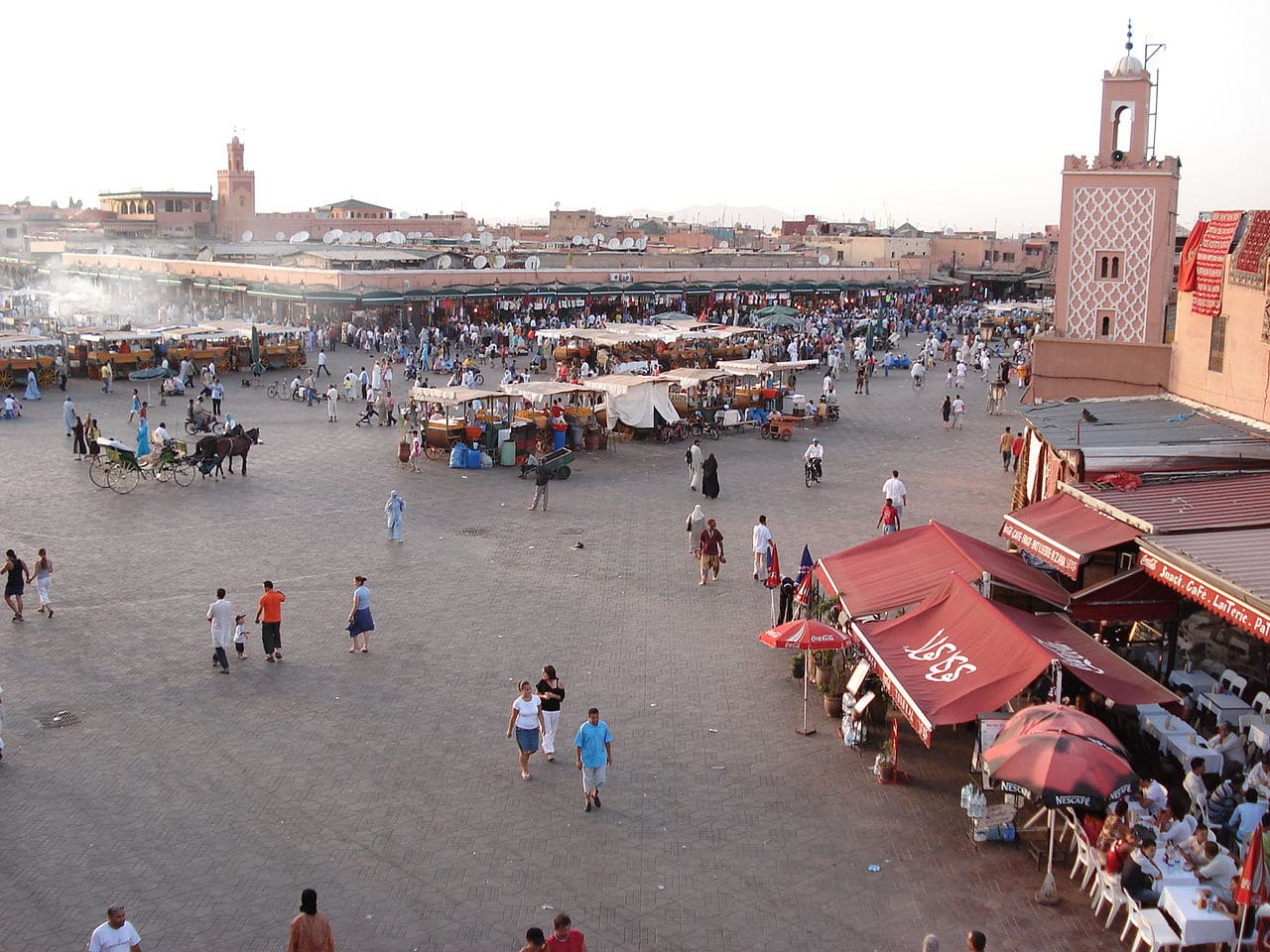
Before talking about what to do in Marrakech it is necessary appeal to your senses. Because visiting the North African city is to immerse yourself in an atmosphere of aromas, images and flavors typical of the tales of 'Arabian Nights'.
Ancient Moroccan imperial city next to Fez, Meknes y Rabat, was the capital of the almorávides. And when they invaded the Iberian Peninsula, Marrakech became a populous city of great markets, palaces and lush gardens, with a splendor that, to some extent, still retains today. If you want to know what to do in Marrakech, we invite you to follow us.
What to see and do in Marrakech
The Moroccan town offers you many spectacular monuments. But the best way to get to know it is to walk through the lively streets of its Medina or old city, declared Heritage, enjoying all its corners. You will find it framed by some imposing reddish walls that change color depending on the daylight. Once in the kasbah (as the Medina is also known), you will be able to see places like the ones we are going to show you.
Djemaa el Fna square, the first thing to do in Marrakech
Is nerve center of life in Marrakech, a huge open space located in the heart of the old city. Surrounded by souks or markets distributed by their main activity, in it you will always find all kinds of artists and curious characters. There are jugglers, dancers, acrobats, juice or food vendors, and even dentists.
We recommend that you start your visit to Marrakech from this place. Everything in the city revolves around it and it is the best way to observe how its people understand life. In addition, UNESCO has inscribed the square in the Representative List of the Intangible Cultural Heritage of Humanity.
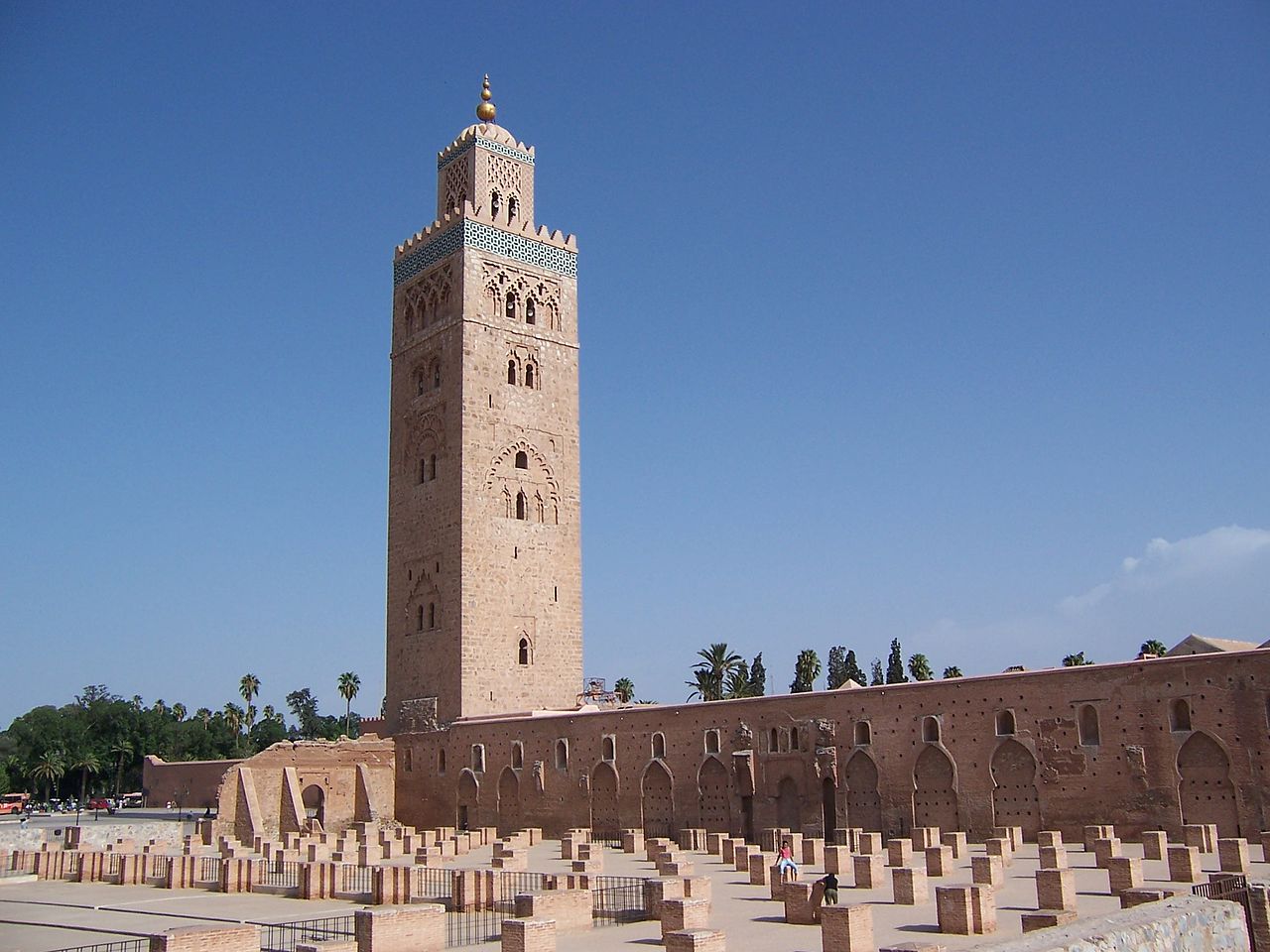
Koutoubia Mosque
The Koutoubía Mosque
A few meters from the previous square, is this spectacular temple built in the XNUMXth century. Built in brick and red sandstone, it stands out for its impressive minaret seventy meters high. Regarding the interior, it has a beautiful minbar or pulpit carved in sandalwood and ebony with ivory and silver finishes.
The Ben Youssef Madrasa
As you know, a madrassa is a Koranic school and it is attached to the mosque of the same name. The complex was built in the XNUMXth century by the Sultan Abou Al Hassan, although extensively reformed by the Saadians. Its impressive courtyard of ablutions and also the decoration of many of its rooms, exquisitely done with stucco, cedar wood, marble and mosaics.
El Badi Palace
It was built at the end of the XNUMXth century by the Sultan Ahmed Al-Mansour to commemorate their victory against the Portuguese in the battle of three kings. He wanted it to be the most lavish ever. In fact, El Badi means «The Incomparable».
He didn't make it so bad. But, without a doubt, it was a lavish palace of which only the walls and an esplanade of orange trees remain. Another sultan ordered its demolition, Moulay ismail, to build with its remains the imperial city of Meknes In XVII century.
The Saadies Tombs, an essential visit to do in Marrakech
The same sultan who ordered the construction of the El Badi palace ordered the construction of this monument, one of the most visited in Marrakech since its discovery in 1917. The name is due to the dynasty that ruled the destinies of Morocco in the XNUMXth and XNUMXth centuries.
The tombs are one of the few remaining remains of it in the city and are separated from the Medina or Kasbah by walls. Its main attraction is a lovely garden adorned with mosaics of different colors.
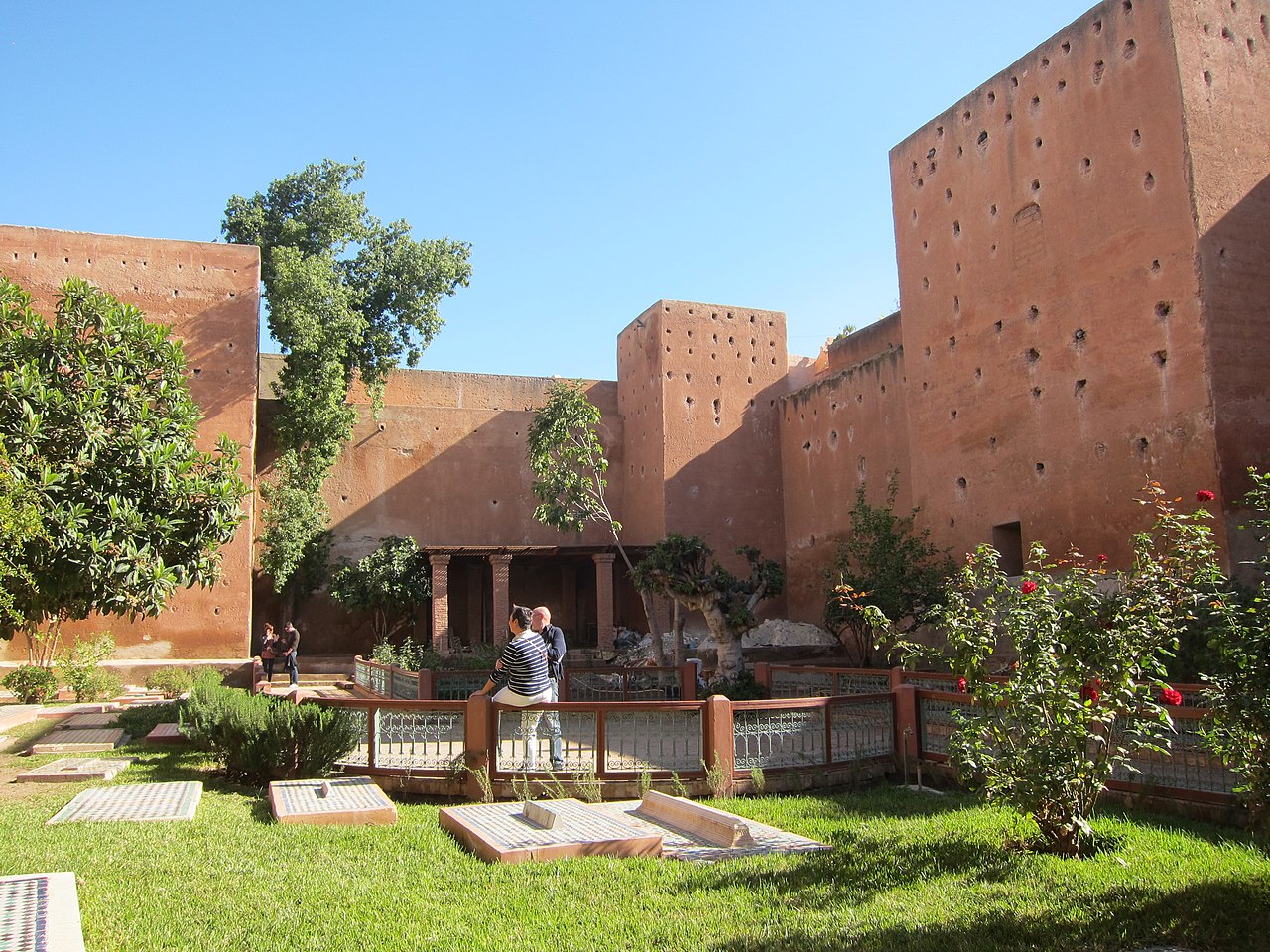
Saadies Tombs
Mellah
It is located south of the Medina and is the old jewish quarter of Marrakech. It is made up of narrow streets and houses with balconies, a singularity within the Semitic areas of Moroccan cities. You can also see a synagogue and a great cemetery.
As a curiosity, we will tell you that Mellah means "Place of salt" and refers to the monopoly that the local Jews had on this product obtained in the atlas mountains.
Bahia Palace
Less history than the previous ones but even more beauty has this monument built at the end of the XNUMXth century. It was commanded to build by Ahmed Ben Moussa, the sultan's vizier, to dedicate to his favorite concubine. In fact, the name means "The beauty".
It was the work of the famous architect Muhammad al-Mekki and it has one hundred and sixty rooms distributed around a beautiful central courtyard lavishly decorated and with a pond. In addition, it has eight hectares of wonderful grounds.
Royal Palace
Although Marrakech is no longer the capital of the kingdom, it also has its royal palace. It is known for Give the makhzen and it has its origin in the Almohad period, although it has been reformed and modernized by all the dynasties that have ruled Morocco. You will not be able to visit it, since its access is prohibited, but it is worth seeing it from the outside.
The museums, unavoidable visits to do in Marrakech
The city of the Atlas has a good number of them. But, since we are talking about palaces, we will start by showing you the exuberant Give Si Said, which houses the Museum of Moroccan Arts. Its construction is also due to the vizier we were talking about earlier and it is from the mid-nineteenth century. To its exterior beauty, it adds luxurious interiors and a magnificent exhibition of carpets, looms, jewelry, wood and other pieces of traditional crafts from the African country.
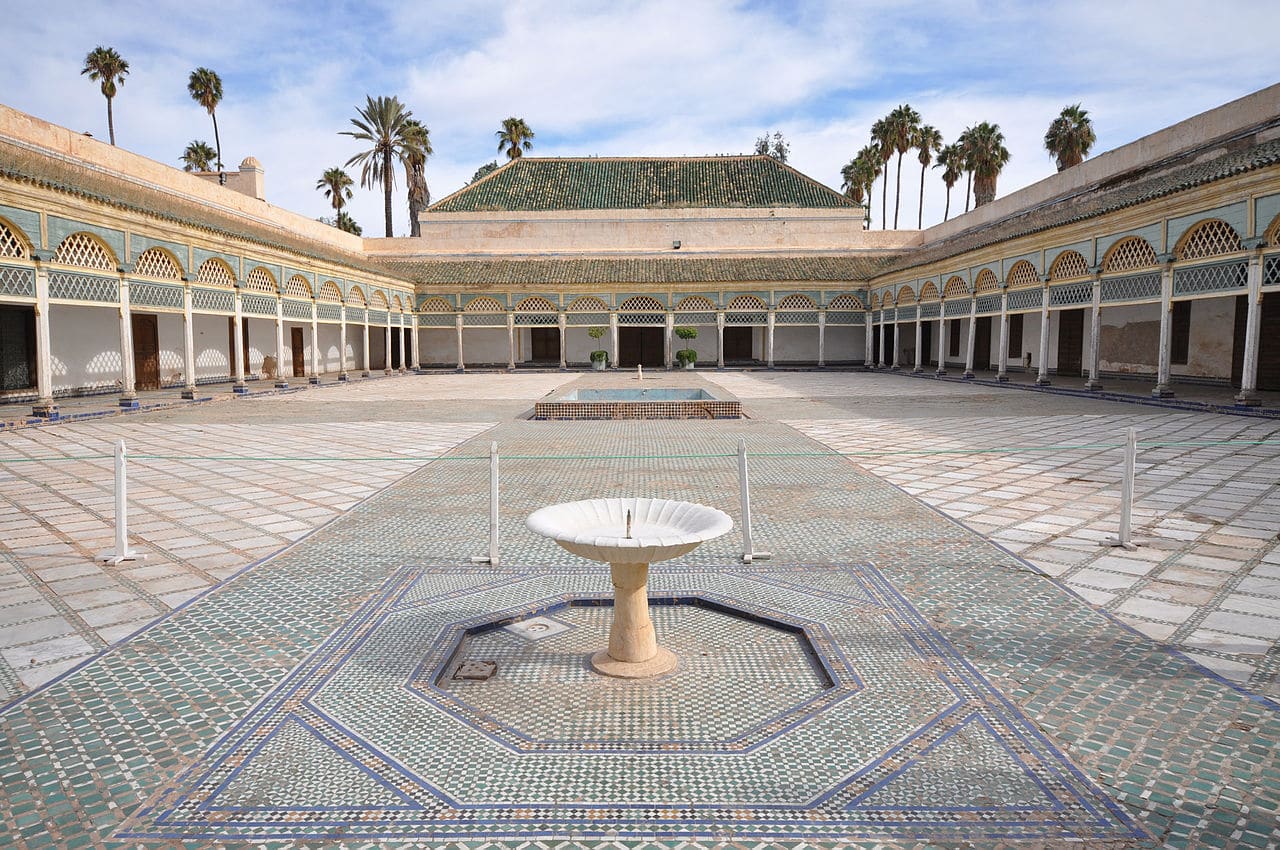
Inner courtyard of the Bahia Palace
Likewise, we advise you to visit Marrakech on Majorelle Garden Museum, which is located in the town of the same name and which offers you a collection of precious objects from the Atlas Mountains. Also the house, in an art deco style and painted in an intense blue tone, is worth your visit. But the highlight of this space are its grounds, which are the most beautiful in the city making an exception.
And these are the La Menara Gardens, the most famous of Marrakech. They are located outside the walls, about a forty-minute walk from the Medina. They were created in the XNUMXth century by the Almohads, who devised a system of underground channels to bring them meltwater from the Atlas. It is precisely this mountain range that acts as a backdrop for the gardens. And the wall, next to a pavilion of green tiles called minzah, complete the set.
Finally, among what to do in Marrakech, we recommend a visit to the so-called Taste Ministry, although it is not properly a museum. It is an avant-garde multifunctional space that holds temporary exhibitions. It is the work of Italian designers Fabrizio Bizzarri y Alesandra lippini.
Dar Cherifa, a benchmark on the Marrakech scene
This literary coffee and gallery is in one of the inner courtyards (riads) oldest in the city. In this magnificent setting, you can see exhibitions, traditional music concerts and book presentations while having a mint tea.
Taste the gastronomy, another of the things to do in Marrakech
You cannot leave Marrakech without trying the delicious gastronomy of the area, in which the spices. You can do it in the many restaurants in the city, but you can also go to the street stalls that are installed in the square Djemaa el Fna at sunset.
Both of them will offer you the typical dishes that we advise you to try. Among them, the tajine, which gets its name from the container in which it is cooked, a peculiar clay pot. It usually has fish or meat with vegetables, spices and even nuts. The most popular tajines are beef with plums and chicken with lemon.
The famous Couscous, which is made with grains of wheat semolina mixed with eggs, meat or vegetables. But, if you prefer a filling soup, you have the harira, which is almost a stew because it has legumes, tomato and meat with figs or dates.
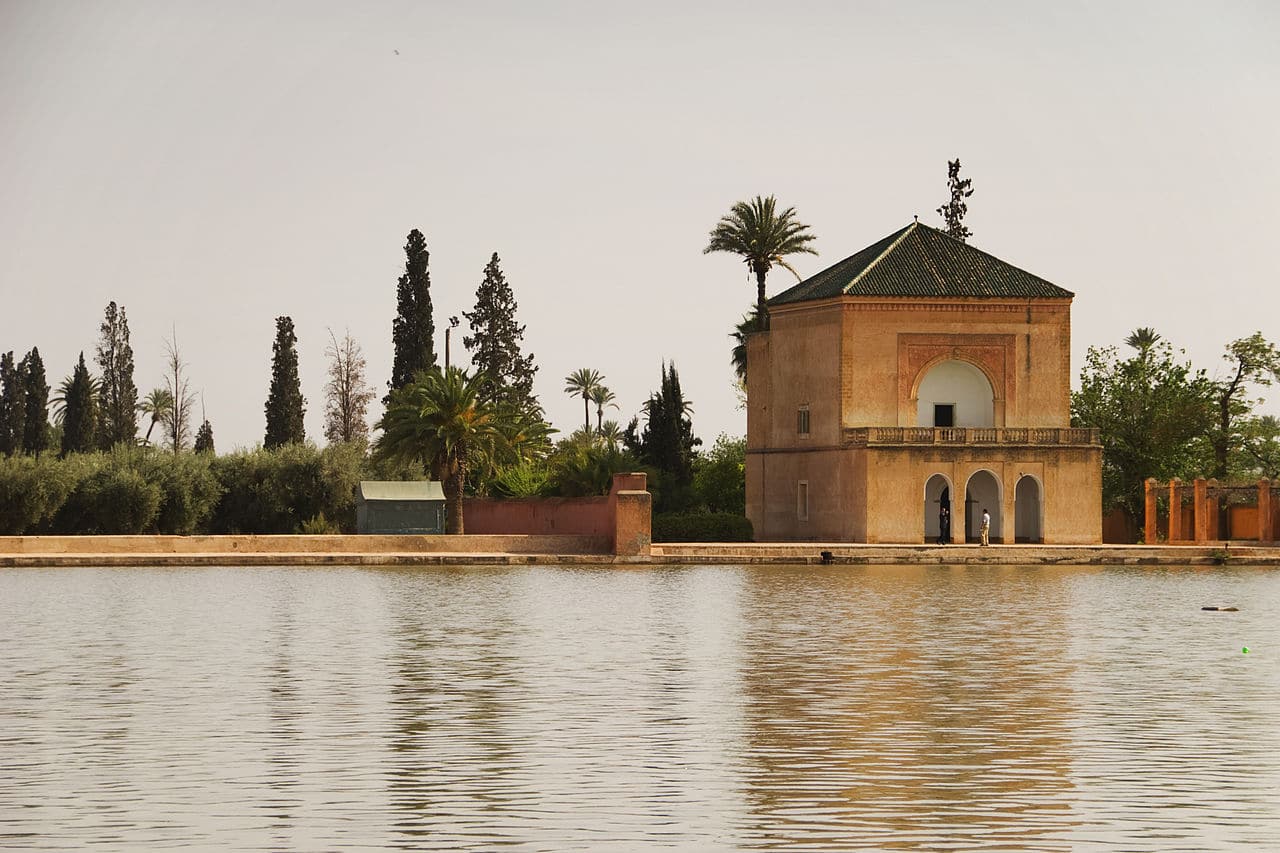
La Menara Gardens
Equally popular are koftas, a kind of meatballs and spices that is eaten with vegetables, and the mechoui, which is lamb roasted entirely on the grill while adding harissa, a hot sauce. It is usually eaten with the hands accompanied by couscous, plums or almonds. On the other hand, typical of the street stalls is the makouda, a kind of potato fritter that is garnished with sauces.
But, if you prefer salads, you can also order the zaalouk, which has boiled aubergine, a tomato and garlic sauce, as well as sweet paprika, lemon juice and cumin. Once it has cooled, oil, salt and black olives are added. More intense is the touajen, a stew of pickled chicken or lamb. You can also order it from fish, but in this case it is called wood.
As for the the sweets, pastilla It is a hybrid of flavors as it is a cake that mixes chicken meat with layers of puff pastry, a filling of spices and almonds as well as icing sugar and cinnamon. You can also order a thousand varieties of tartlets and other sweets such as gazelle horn.
Finally, to drink you can find in the street stalls Natural orange juice. But the drink par excellence is the Mint tea, to which we alluded before. There is a whole ritual around this drink. As for alcoholics, they are prohibited on the street. But both in hotels and in licensed bars you will find them without problem.
In conclusion, you know what to do in Marrakech. The city of the Atlas offers you everything we have mentioned and much more. In a way, we said, visiting it is like traveling to 'Arabian Nights'. Don't feel like immersing yourself in the millennial arabic culture?